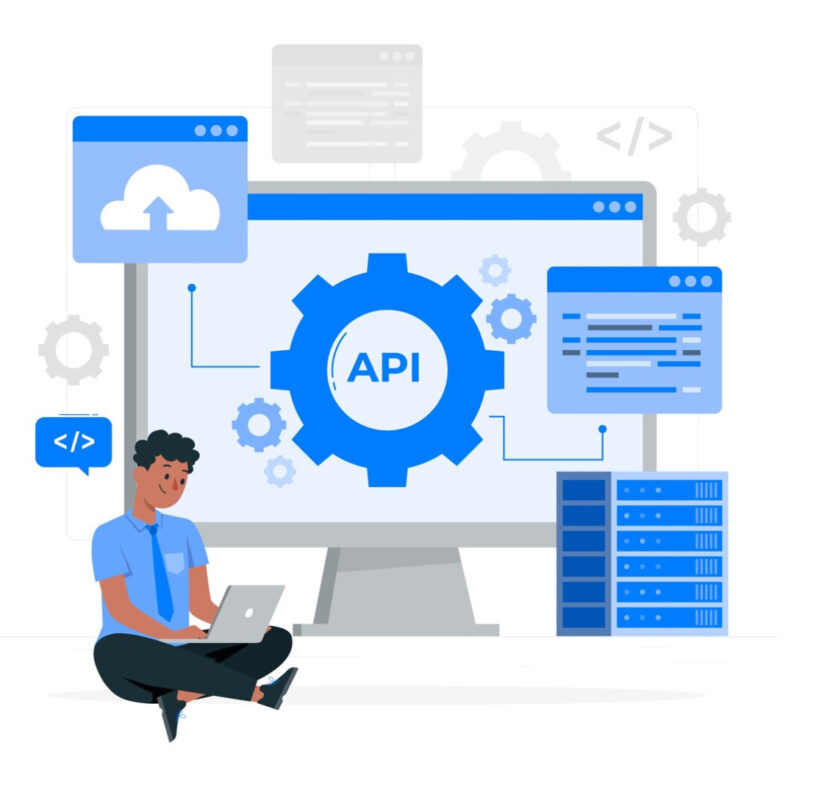APIs play a huge part in the software development field. These sets of protocols specify how software components should interact. They let different web applications communicate and share data. Plus, they facilitate connections between internal services.
Many organizations rely on them a lot in their operations. They often hold sensitive data, so proper security is a must. Today, we will tell you about the biggest threats you might face. Keep reading and learn about the best protection measures!
Common APIs threats
The usage of APIs is growing and so does the risk of security threats. You need to comprehend which difficulties you might have if you want to safeguard your systems and data. Below, we gathered some of the most prevalent risks.
Injection attacks
These attacks exploit how the application processes input data. They allow the attacker to inject malicious code or queries. They often result in data breaches and system compromises. Here are a few types of these attacks:
- SQL injection;
- Command injection attacks;
- Cross-site scripting (XSS);
- LDAP injection;
- XPath injection;
- NoSQL injection.
Broken Authentication
This issue happens when the authentication mechanism can’t properly verify the identity of users. It allows criminals to bypass controls and impersonate legitimate users. The most typical causes of broken authentication are
- Short or easily guessable passwords;
- Poor session management;
- Insecure tokens;
- No additional authentication factors;
- Incorrect implementation of security protocols;
- Overly simplistic password recovery.
Excessive data exposure
You might have this problem if APIs return more data than necessary. This usually happens because of improper design or insufficient data filtering. It can lead to serious privacy issues as it gives intruders access to confidential details. Also, it will give them more opportunities to explore other susceptibilities within your APIs.
Insecure endpoints
Another significant risk is insecure endpoints. These are distinct URLs that external systems use to access the API. When attackers manipulate them, they can gain unauthorized access and compromise your systems. What may lead to this problem?
- Public exposure of sensitive endpoints;
- Lack of authorization;
- Weak encryption;
- CORS policies that are too permissive;
- Detailed error messages;
- Inadequate input validation and sanitization, etc.
Insufficient logging and monitoring
Inadequate logging happens when an API does not record enough details about its operations and requests. It may leave gaps in the audit trail. Also, possible security incidents may go unnoticed without proper monitoring.
All of this gives criminals more time to exploit the vulnerabilities. Also, it becomes much harder to determine the impact of a breach without detailed logs. You may fail to detect malicious activities by your internal users as well.
Improper assets management
You may have to deal with certain operational inefficiencies if you neglect the management process of APIs. Also, it might lead to some problems with compliance. This issue usually occurs when you use
- Zombie APIs;
- Undocumented APIs;
- Legacy APIs;
- Shadow APIs.
MitM Attacks
Another common danger is MitM attack. It is a form of cyber attack where someone intercepts transmissions between two parties. The attacker might alter it in the process while people still believe they are directly communicating with each other. This usually happens due to a lack of encryption.
Investing in WordPress development for agencies can ensure that robust security measures are in place, reducing the risk of such attacks. Furthermore, WordPress development for agencies often includes regular updates and maintenance to keep security protocols up to date and effective
Best security practices for APIs
You already know about some of the problems you might have with the APIs. Now, it’s time for some practical solutions. Proper safety measures will help you protect any sensitive info and resources. Below, we gathered some practices you might adopt.
Implementing predictive analytics in the cloud can help identify potential security threats before they become critical issues. Additionally, leveraging predictive analytics in the cloud allows for real-time monitoring and analysis, enhancing your overall security posture.
Strong authentication mechanisms
These mechanisms confirm the identity of all the users and devices that attempt to use your APIs. So, it’s important to find alternatives suitable for your security needs. Here are a few effective mechanisms you can implement:
- API keys;
- OAuth;
- Token-based authentication (JSON Web Tokens, JWTs);
- Multi-factor authentication;
- SSO.
Also, we recommend you use a centralized authorization service to manage access control policies across all your applications. Make sure to update these permissions from time to time.
HTTPS encryption
You should always employ HTTPS to encrypt data transferred between clients and your API server. It uses SSL or TSL protocols to establish a safe connection. Also, it provides authentication mechanisms to confirm the identity of the server. This practice can help you avert
- Eavesdropping;
- Tampering;
- Man-in-the-middle attacks;
- Session hijacking, etc.
Rate limiting
You can use this technique to control the number of requests clients can make to an API within a certain timeframe. That way you’ll prevent overwhelming the server. Also, you can deter brute-force attacks or scraping with its help. You probably want to know how to implement rate limiting. Here are a few steps you should take:
- Establish clear policies based on your API’s capabilities;
- Use the Token Bucket algorithm;
- Include rate limiting info in HTTP headers;
- Define appropriate error responses;
- Use identifiers to track and enforce rate limits per client;
- Monitor the traffic to adjust the limits based on usage patterns.
Error handling practices
Another important element of API security is error handling. You need to make sure users receive proper responses and you keep your sensitive info safe. How can you achieve that?
- Define a set of standardized error codes and messages;
- Limit the error details;
- Use appropriate HTTP status codes to indicate the outcome of requests;
- Make your error messages customized;
- Implement error-handling middleware or interceptors;
- Log relevant details on the server (timestamp, client IP address, request parameters, etc.);
- Provide different language options for your clients.
API lifecycle management
Lastly, we want to mention that proper management of APIs throughout their entire lifecycle is a must. You need to develop a structured process to maintain its optimal performance. Here are the key stages you need to go through:
- Design intuitive interfaces and adhere to all the current standards;
- Create complete documentation that describes all the endpoints and parameters;
- Follow secure coding guidelines and conduct testing;
- Configure the setting environment properly;
- Implement monitoring and logging mechanisms;
- Use versioning schemes to manage updates;
- Provide migration paths;
- Set the security and access controls;
- Determine and enforce API usage policies;
- Monitor performance metrics and provide support channels;
- Create a strategy for API retirement.
Top 6 security tools for APIs
We can all agree that proper security is a must for APIs. There are many tools and platforms you can use to protect them. So, we created a list of instruments you can try out. Get familiar with them below.
API gateways
These getaways act as a centralized entry point for APIs. Authentication and traffic management are their main features. Also, they log incoming requests and protect the systems against common web attacks. Plus, they can basically manage the entire lifecycle of APIs. Some of the most popular solutions are
- Apigee;
- Kong;
- AWS API Gateway;
- Azure API Management.
Web application firewalls
Also, we recommend incorporating WAFs. They can inspect and filter HTTP traffic between clients and APIs. They operate at Layer 7 of the OSI model. You can tailor their security rules to your exact needs. These firewalls are available in two models – on-premises and cloud. You can try out the following services:
- ModSecurity;
- AWS WAF;
- Azure WAF;
- Cloudflare WAF.
Security testing tools
These tools will help you assess the API security status. They can conduct static analysis and dynamic testing. Plus, they will check the compliance and authentication protocols. Many of them have automated scanning feature that allows them to recognize vulnerabilities in real time. You need to evaluate integration conditions and your specific testing needs before choosing a suitable instrument. The most popular alternatives are
- OWASP ZAP;
- Postman;
- Burp Suite;
- SoapUI;
- API Fortress.
IAM systems
Also, we strongly recommend using IAM tools if you want to strengthen your access control. They offer different authentication methods (OAuth, API keys, JWT, etc.) Also, they often have role-based access control features. So, you can assign approvals to users or applications based on their responsibilities. These solutions have auditing capabilities as well. You can easily monitor user activities and detect anomalies right away. Here are a few platforms and services you can use:
- Okta;
- Auth0;
- Azure Active Directory;
- AWS IAM;
- OneLogin.
Monitoring and logging instruments
As we’ve noted before, you might not notice certain incidents without proper logging. These instruments can help you avoid that. They will provide visibility in your API traffic and performance metrics. Also, they can catch anomalies and alert you about any suspicious actions immediately. Some of the best monitoring and logging tools are
- Splunk;
- ELK Stack;
- Datadog;
- Sumo Logic.
Dependency scanning tools
These solutions will help you pinpoint vulnerabilities within the libraries and other components APIs depend on. Also, they’ll monitor dependencies for license compliance. That way you can avoid any legal and operational risks. They provide detailed reports about any issues and recommendations for updates. We suggest you try out some of these tools:
- Snyk;
- WhiteSource;
- Dependency-Check;
- OWASP Dependency-Track.
Conclusion
Many organizations depend on APIs in their work. They contain a lot of important and confidential data. So, they’re constantly at the risk of attacks. That’s why proper security is so essential.
You have to control all the authentication processes and use encryption in your communication. Also, you need to implement adequate rate-limiting and error-handling techniques. There are many different platforms and instruments you can use for those purposes. We mentioned some of the most popular ones above. Hope that our guide was useful to you. Remember that strong API protection is your key to optimal performance!











Leave a Reply